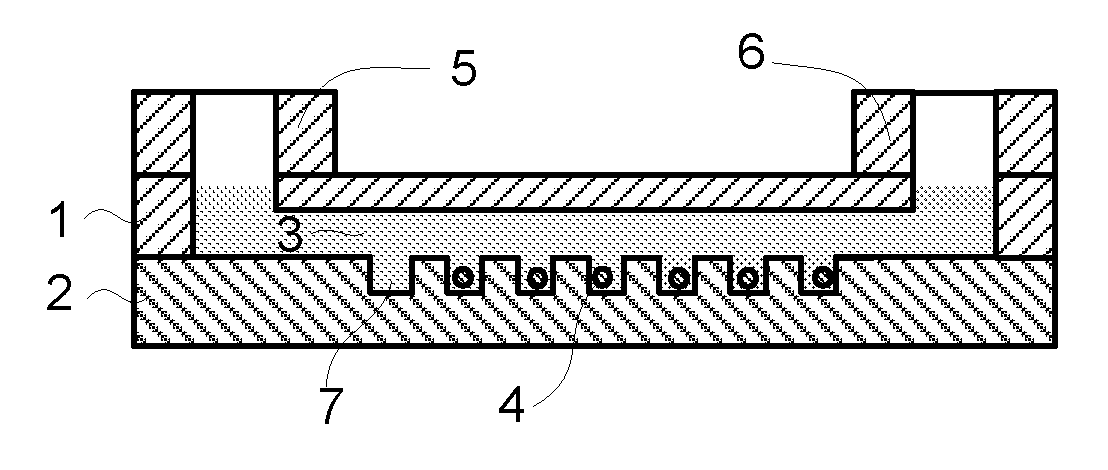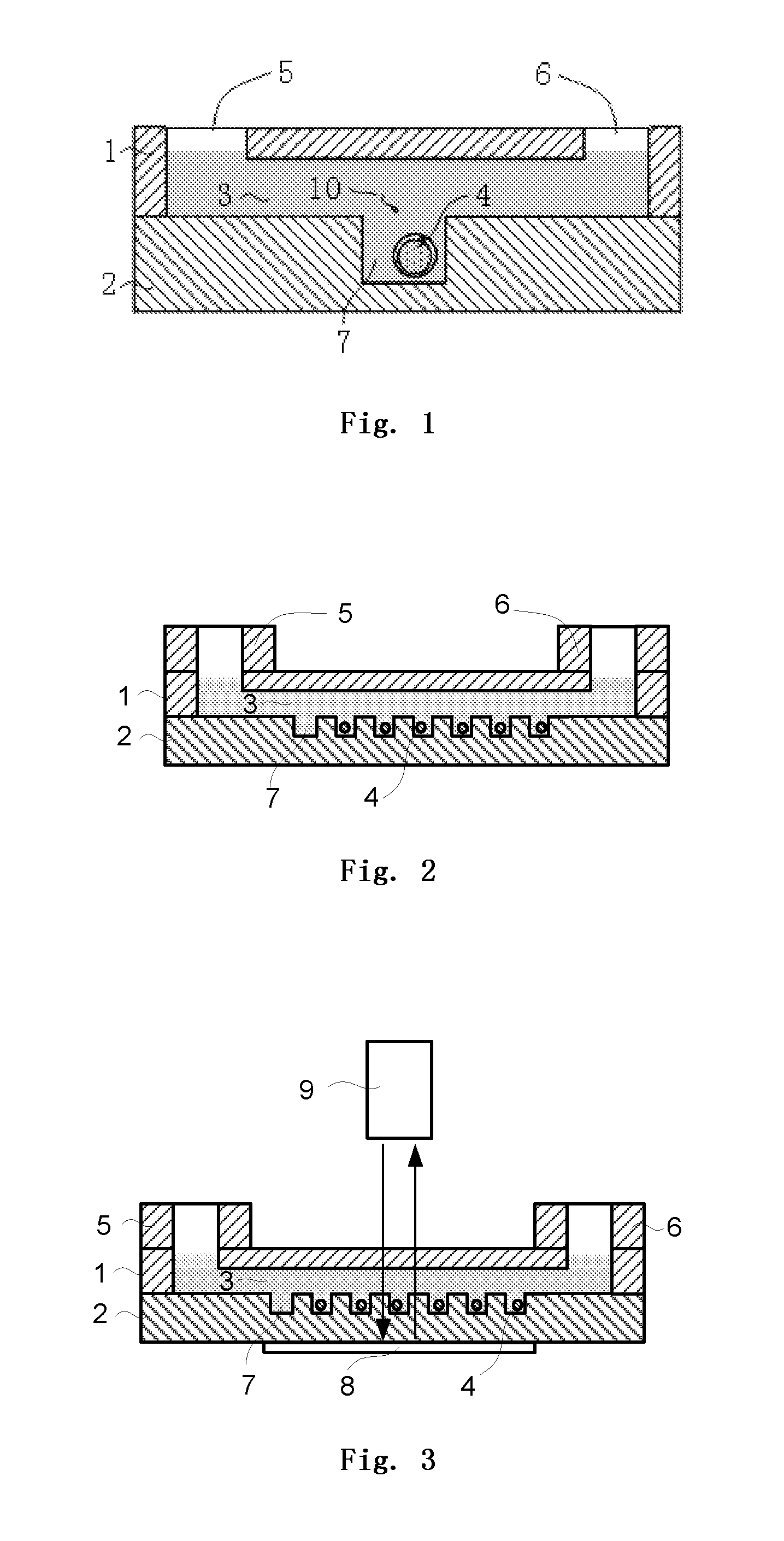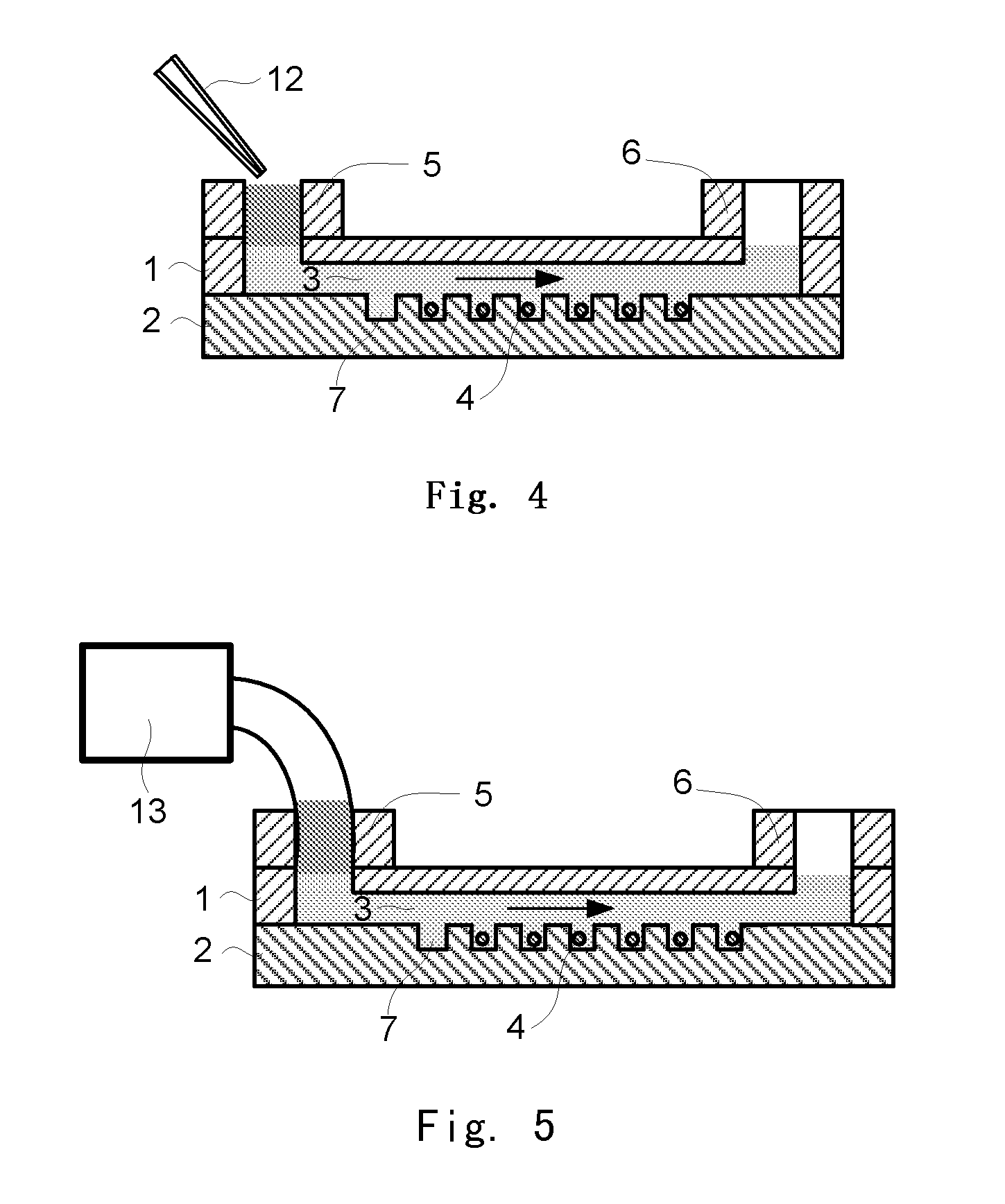Integrated microfluidic device for single oocyte trapping
a microfluidic device and oocyte technology, applied in the field of integrated microfluidic devices, can solve the problems of not only harming the oocyte, not suitable for simultaneous positioning of multiple oocytes, and inconvenient work, and achieve the effect of facilitating the further development of fertilized eggs
- Summary
- Abstract
- Description
- Claims
- Application Information
AI Technical Summary
Benefits of technology
Problems solved by technology
Method used
Image
Examples
example 1
[0059]FIG. 1 illustrates one embodiment of the present invention of microfluidic chip which comprises an upper micro-channel layer 1 and a lower micro-well array layer 2, and the upper micro-channel layer 1 is closely connected to the lower micro-well layer 2. Micro-channel 3 is designed to be at the bottom of layer 1 and in close contact with layer 2, which has a height greater than the diameter of oocyte transported through it. On the micro-channel layer 1, inlet 5 and outlet 6 are also designed to be connected to the micro-channel 3, which have flexible structures, such as holes or wells (as shown in FIG. 2), or set as interfaces to be connected to other channels. On the micro-well array layer 2, more than one micro-wells 7 are included to trap oocyte 4, which are distributed to form an array both in parallel and vertical to the fluidic direction.
[0060]In the above embodiment, oocyte 4 is transferred by culture medium, along the micro-channel 3 in micro-channel layer 1 to the top...
example 2
[0063]FIG. 2 illustrates one embodiment of the present invention wherein the micro-well array covers the entire width of micro-channel 3, and along the fluidic direction there is a shift between each row of micro-wells 7 (the shift is smaller than half of the width of the micro-well 7), so as to capture oocytes 4 in different positions in micro-channel 3. Furthermore, the intervals between two micro-wells 7 are smaller than the width of micro-wells 7, which facilitates the entrance by oocyte 4 into the micro-well 7.
[0064]In the above embodiment, the shape of micro-well 7 can be square, circle or in any other shapes. The size of micro-well 7 can be designed to fit the size of oocytes of different species, and its width should be larger than the diameter of hatched embryo in order to provide enough space for embryo development.
example 3
[0065]FIG. 3 illustrates one embodiment of the present invention of microfluidic chip which is integrated with an optical detection device such as an interferometer 9. When the materials of micro-channel layer 1 and micro-well array layer 2 are light transparent (e.g., PDMS, etc.), a reflective layer 8 can be placed beneath micro-well array layer 2, and an interferometer 9 can be set on top of micro-channel layer 1. Optical images of oocytes 4 can be obtained by the interferometer 9, providing real-time observation of the fertilization and development process.
PUM
| Property | Measurement | Unit |
|---|---|---|
| diameter | aaaaa | aaaaa |
| size | aaaaa | aaaaa |
| depths | aaaaa | aaaaa |
Abstract
Description
Claims
Application Information
 Login to View More
Login to View More - R&D Engineer
- R&D Manager
- IP Professional
- Industry Leading Data Capabilities
- Powerful AI technology
- Patent DNA Extraction
Browse by: Latest US Patents, China's latest patents, Technical Efficacy Thesaurus, Application Domain, Technology Topic, Popular Technical Reports.
© 2024 PatSnap. All rights reserved.Legal|Privacy policy|Modern Slavery Act Transparency Statement|Sitemap|About US| Contact US: help@patsnap.com










